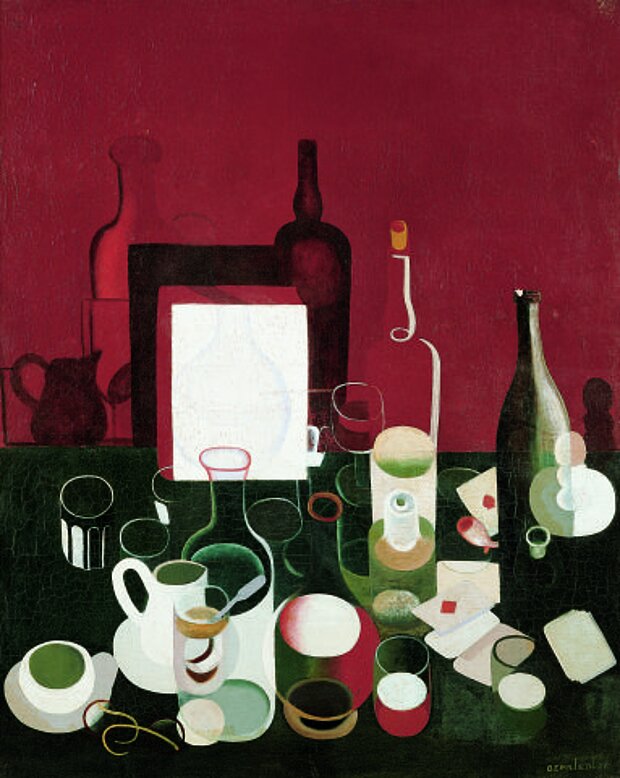
Ozenfant, Amédée
Nombreux Objets
Numerous Objects
1927

© mumok
| Object description | Oil on canvas |
|---|---|
| Object category | painting |
| Material |
Support:
canvas
Painting layer:
oil paint
|
| Technique |
Object:
oil paintings
|
| Dimensions |
Object:
height: 81 cm,
width: 65 cm,
depth: 2,5 cm
Frame:
height: 89 cm,
width: 73,5 cm,
depth: 5 cm
|
| Year of acquisition | 1989 |
| Inventory number | ÖL-Stg 200/0 |
| Creditline | mumok - Museum moderner Kunst Stiftung Ludwig Wien, Leihgabe der Österreichischen Ludwig-Stiftung |
| Rights reference | Bildrecht, Wien |
| Further information about the person | Ozenfant, Amédée [GND] |
| Literature |
Genau und anders :Mathematik in der Kunst von Dürer bis Sol LeWitt Laboratorium Moderne/Bildende Kunst, Fotografie und Film im Aufbruch |
The French painter Amédée Ozenfant founded Purism in 1918 along with architect Charles Edouard Jeanneret who later became known by the name of Le Corbusier. Because Cubism appeared to them to be too individualized and ideological, they published a programmatic manifesto, “Après le cubism” [After Cubism] in which they demanded a reform of the originally clear concepts of cubist painting and a return to pure form. In this connection they took machines as a symbol and extolled their functional beauty. Deviating from cubism, the purists strove for a closer relationship to the depicted objects. Using a simplified, precise pictorial language and a corresponding compositional style, they intended to achieve a rational and reduced mode of representation which would encompass all the arts equally. In painting and graphic works the purists placed reliance on the typification of the depicted objects more than anything else. In the clear and coolly-constructed composition, “Numerous Objects” (Nombreux Objets), by Amédée Ozenfant you can see some of the Purists’ central pictorial motives constructed of basic forms that are typified and repeatable. It is also possible to see in these the fundamental and pioneering assumption that every object, every glass and every bottle has a inner, essential form – is a type. Purism consists of that and, with its principle of the rational instead of the decorative, it stands at the beginning of a new aesthetics which continued to be felt in Functionalism.
© mumok – museum moderner kunst stiftung ludwig wien